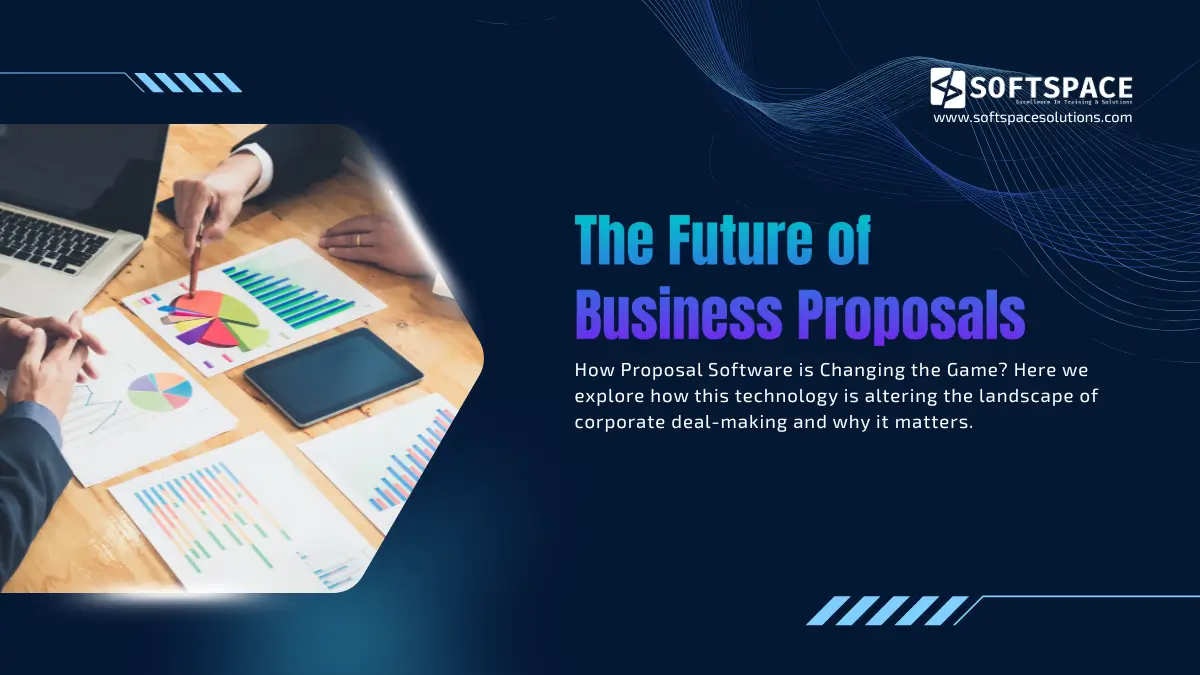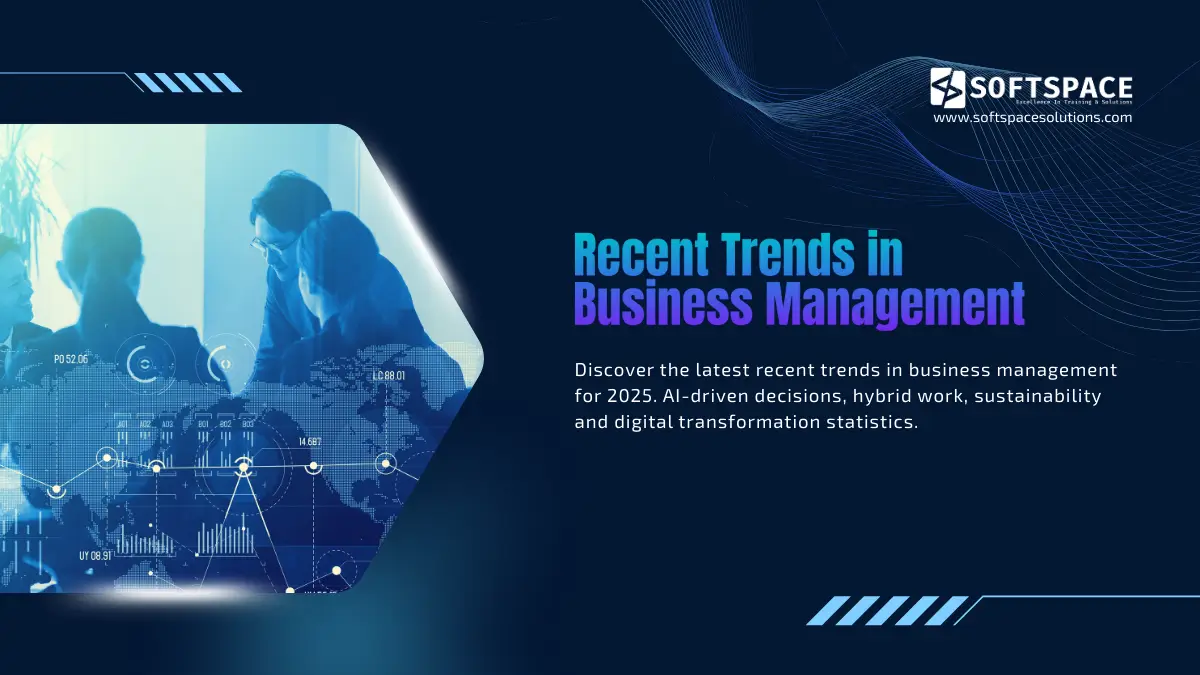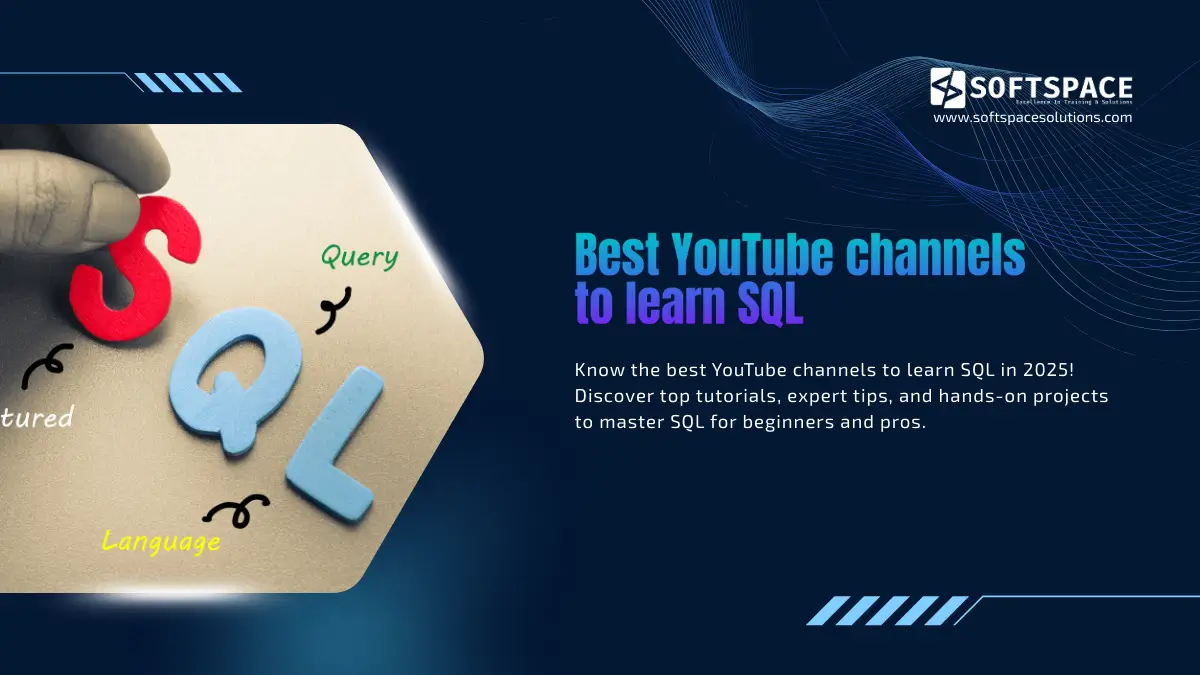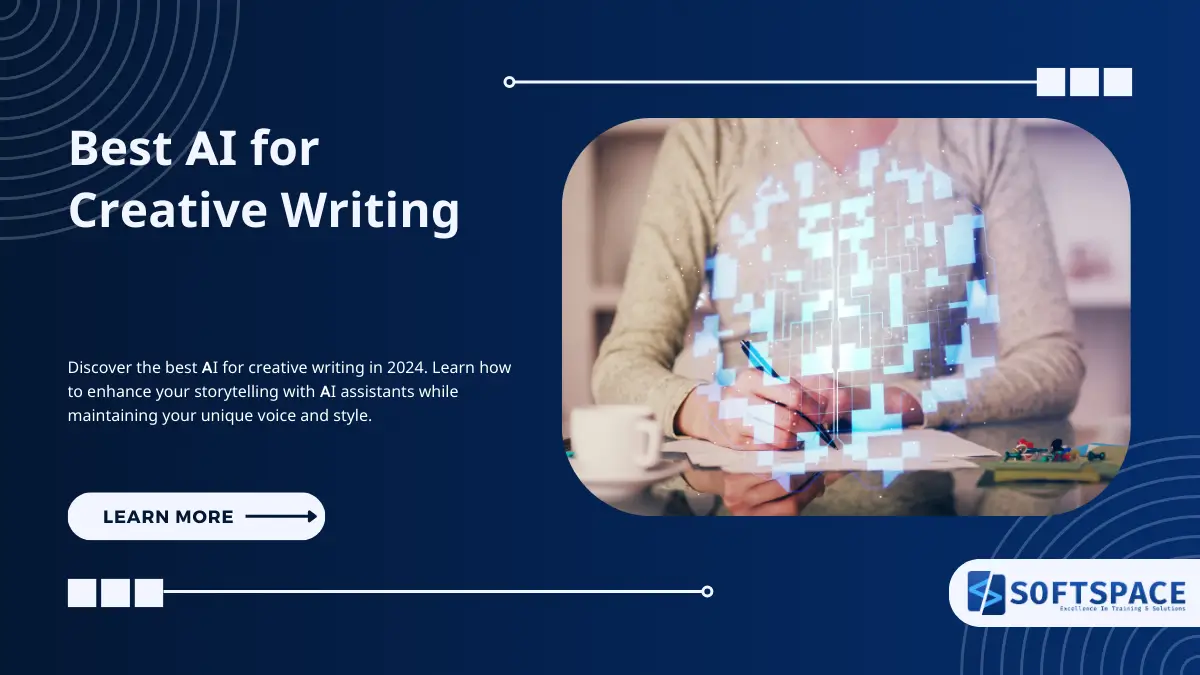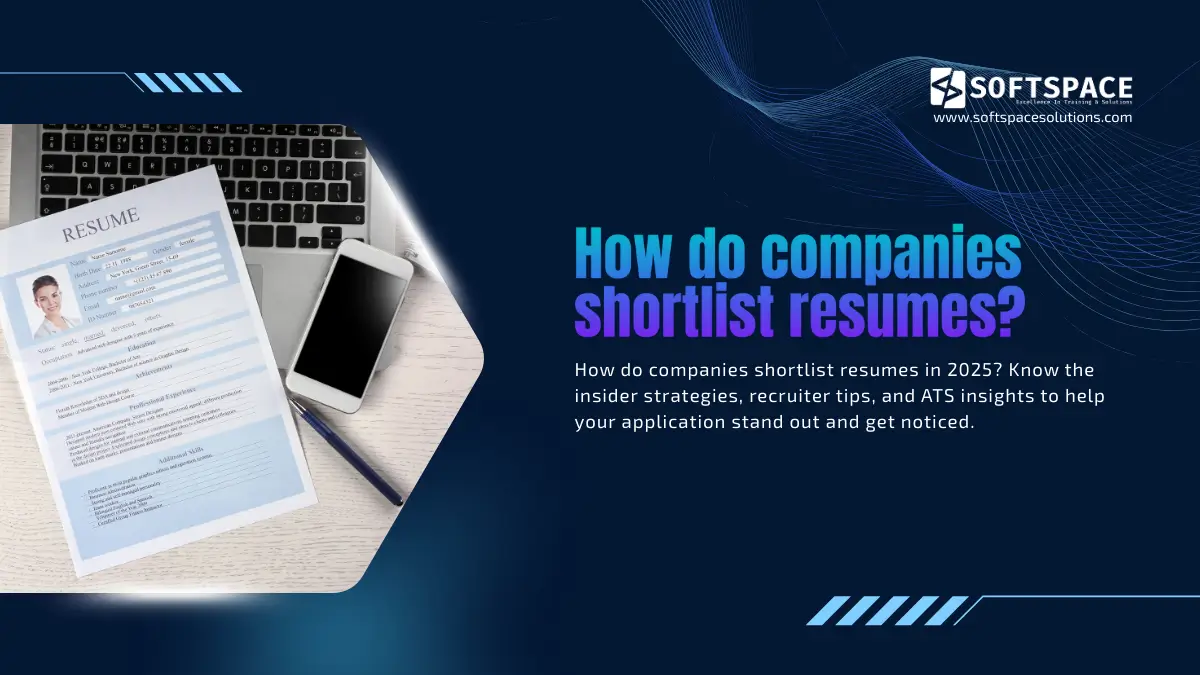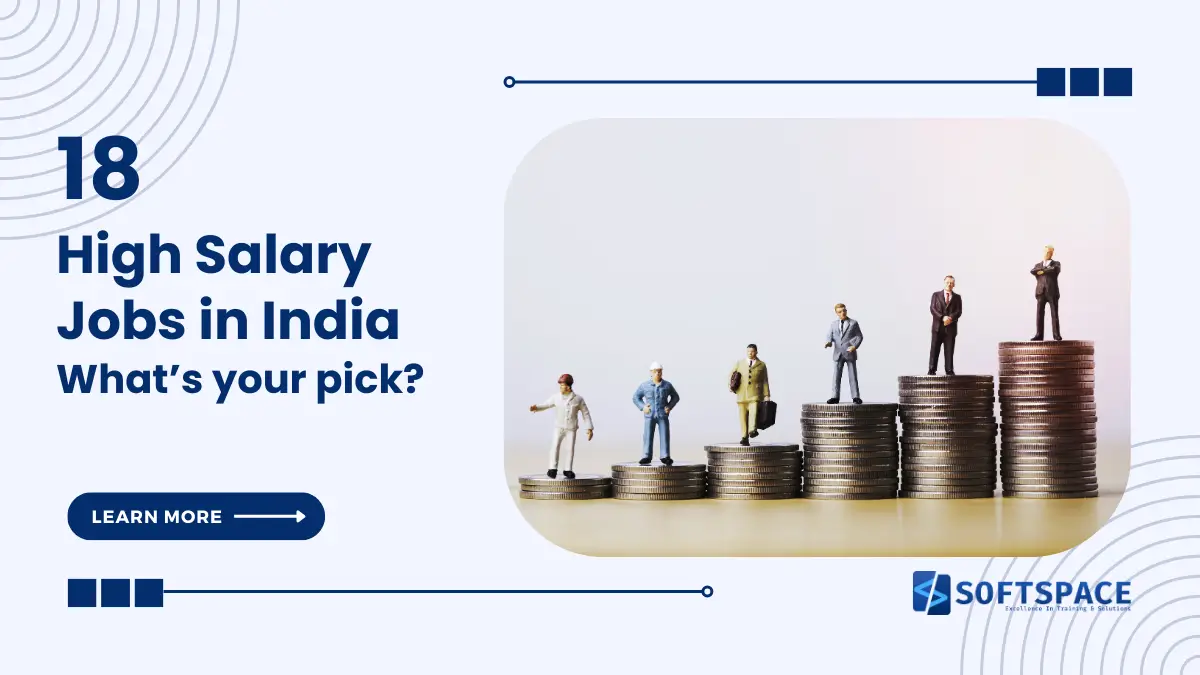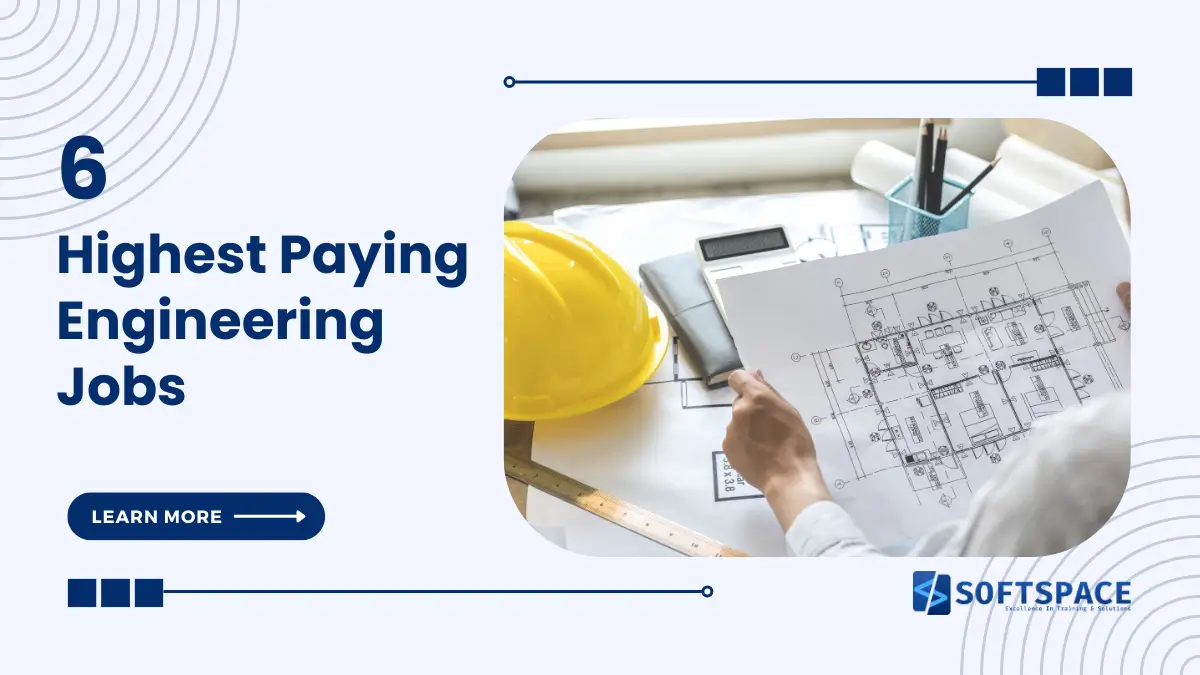Business analysts act as a bridge between technology and business. They evaluate business needs, recommend suitable technology, oversee projects, and ensure quality. In this article, I will share standard interview questions for the business analyst role, ranging from basic business analyst interview questions to more technical and role-specific business analyst interview questions. I will also include information on the salaries of experienced business analysts at various companies.
Business Analyst Salary in India
The salary range for a business analyst in India is ₹3.0 lakhs to ₹17.0 lakhs, with an average of ₹9.8 lakhs per year. The most recent 1.3L wages paid to business analysts serve as the basis for salary projections.
| Company Name | Avg Annual Salary | Salary Range (₹/yr) | Experience Range | Number of Salaries |
|---|---|---|---|---|
| TCS | ₹9 Lakhs | ₹4 L/yr – ₹15 L/yr | 0 – 13 yrs | 9.2k |
| Genpact | ₹7.9 Lakhs | ₹3 L/yr – ₹12 L/yr | 0 – 11 yrs | 4.8k |
| Accenture | ₹9.8 Lakhs | ₹4.1 L/yr – ₹17.1 L/yr | 0 – 11 yrs | 3.7k |
| Wipro | ₹10.9 Lakhs | ₹4.7 L/yr – ₹18 L/yr | 0 – 13 yrs | 3k |
| Cognizant | ₹10.5 Lakhs | ₹4.3 L/yr – ₹18 L/yr | 0 – 11 yrs | 2.7k |
| Deloitte | ₹10.7 Lakhs | ₹4.7 L/yr – ₹17 L/yr | 0 – 8 yrs | 2k |
| Infosys | ₹10.3 Lakhs | ₹4.5 L/yr – ₹18 L/yr | 0 – 11 yrs | 1.5k |
Basic Business Analyst Interview Questions
What is the role of a business analyst in an organisation?
The link between business and IT is a business analyst (BA). They assess the demands of the company, find answers, and then turn those answers into workable programmes. In order to make sure that solutions match strategic objectives, BAs work with stakeholders to collect requirements, define procedures, and document processes. They are essential for enhancing an organisation’s decision-making, production, and efficiency.
How do you see yourself fit for the role of business analyst in our company?
When an interviewer asks such questions, they are basically trying to find out how well you understand the position, what talents you have that are relevant to it, and how well you support the objectives of their organisation. They are interested in your potential to contribute to the team, your enthusiasm, and your ability to solve problems.
Sample response to this question
I have a strong background in business analysis and am passionate about [a particular field of study, such as customer experience, process optimisation, or data analysis]. I have faith that I can [particular skill, such as eliciting requirements, modelling complex processes, or analysing data]. I am eager to apply my skills to help your company achieve its goals and become successful.
What are the core competencies of a business analyst?
The core competencies of a Business Analyst are
Analytical Skills: Proficient in gathering requirements, analysing complicated business challenges, and coming up with solutions.
Technical skills: expertise in a range of data analysis, modelling, and process mapping tools and methodologies.
Communication skills: Excellent written and verbal communication skills are essential for interacting with stakeholders at all levels.
Domain Knowledge: The ability to give context-specific solutions through an understanding of particular business domains.
Problem-Solving Skills: The capacity to deconstruct difficult issues, pinpoint underlying causes, and suggest creative fixes.
Project Management Skills: Knowledge of project management techniques to guarantee projects are completed on schedule.
List some of the skills and tools used by business analysts.
Skills
Technical: understanding of the SDLC, programming languages, data analysis, SQL, BI tools, process modelling, requirements collection, system analysis, wireframing, and prototyping.
Soft: Interpersonal skills, communication, problem-solving, critical thinking, negotiation, flexibility,
Tools
General: statistical software (R, Python), SQL, data visualisation tools (Tableau, Power BI), and the Microsoft Office Suite (Excel, Word, PowerPoint, Outlook).
Particulars: project management tools, wireframing tools, modelling tools (BPMN, UML), requirements management tools, and collaboration tools.
What is INVEST?
The acronym INVEST is used to assess user stories in Agile software development. It contributes to the clarity, conciseness, and value of user stories. This acronym refers to:
Independent: To enable variable prioritisation and development, user stories should be unrelated to one another.
Negotiable: To guarantee clarity and viability, the development team can negotiate a user story’s specifics.
Valuable: User stories ought to benefit the client or final user.
Estimable: The development team should be able to estimate how much work it will take to implement a user narrative.
Small: User stories ought to be brief enough to be finished in a single iteration.
Testable: To make sure user stories satisfy the criteria, they should be tested.
Are you aware of the different techniques like Moscow and SWOT?
In such questions, interviewers want to hear your understanding of techniques like Moscow, and when responding to this question, you should show that you understand the methods and give instances of your prior application of them. Here is the possible reply to such a question:
I understand both SWOT and Moscow. Moscow is an excellent tool for setting project feature priorities. For instance, Moscow was utilised to determine the fundamental features that were absolutely necessary for the project’s success while I was working on [project name]. This prevented scope creep and helped us concentrate our efforts.
Another useful method for evaluating a project’s opportunities, threats, weaknesses, and strengths is SWOT analysis. For instance, we employed SWOT analysis to determine possible risks and opportunities related to the launch of a new product when I was in [prior employment]. This enabled us to take advantage of new trends and create a thorough risk mitigation plan.
What do you mean by project deliverables?
Project deliverables are the specific outputs or results that are expected to be produced as a part of a project. They can be tangible items like software, hardware, or reports, or intangible outcomes like improved processes or increased efficiency. Deliverables are typically defined in the project plan and are used to measure the success of the project.
What are the various stages of a business project?
The following are typical stages of a business project, though they might vary based on the particular project:
Initiation: Establishing the project’s definition, aims, and objectives is known as the initiation phase.
Planning: This is where the tasks, materials, and schedule are created for the project.
Execution: This is the phase in which the project is completed as planned.
Monitoring and Control: This stage involves keeping an eye on the project to make sure it is proceeding as planned and taking appropriate remedial action as necessary.
Closure: The project’s completion and assessment take place here.
How do you handle conflicting priorities when working on multiple projects?
In such a type of question, interviewers usually want to check your ability to effectively prioritise your tasks, manage the time, communicate effectively, and how you solve problems under pressure.
Sample response to this question.
I rank tasks according to their importance and urgency. I prioritise my tasks by using time management strategies like the Eisenhower matrix. In order to control expectations and, if needed, negotiate timeframes, I speak honestly with stakeholders. I reevaluate priorities and modify my approach in response to unforeseen obstacles.
How does a business systems analyst differ from a traditional business analyst?
A business systems analyst and a traditional business analyst both analyse business processes and identify opportunities for improvement. However, a business systems analyst has a deeper understanding of information technology and is able to translate business requirements into technical specifications. They are also involved in the design and implementation of new systems.
What techniques do you use to gather requirements?
Here, interviewers want to know candidates’ understanding of various requirements gathering techniques that can adapt to diverse project contexts.
Sample response to this question
I usually employ a mix of methods such as interviews, surveys, workshops, and observations. The chosen strategy varies based on the project’s intricacy and the availability of stakeholders. I emphasise active listening, transparent communication, and an emphasis on grasping the fundamental needs to facilitate successful requirement gathering.
What is the requirement elicitation technique?
The process of obtaining information about the needs and requirements of project stakeholders is known as requirement elicitation, and it is used to determine the project’s requirements and scope. There are numerous methods for requirement elicitation, such as document analysis, workshops, surveys, and interviews.
What are non-functional requirements?
A system’s non-functional requirements specify its quality attributes. They outline a system’s performance requirements rather than its functionality. Functional requirements are directly related to specific system functions, whereas NFRs are not.
Examples of common NFRs are:
Performance: throughput, response time, and use of resources.
Security: threat reduction, data protection, and access control.
Usability: user experience, usability, and user interface design.
Reliability: recovery time, fault tolerance, and mean interval between failures.
Scalability: capacity planning and the ability to manage rising loads.
Which documents are used to capture non-functional requirements?
Software Requirements Specification (SRS): A detailed document that describes both functional and non-functional requirements.
Non-functional requirements (NFRs): Explain the way in which users engage with the system, which may involve considerations of performance and usability.
System Design Document (SDD): Provides information about the system structure, including non-functional requirements such as scalability and reliability.
Test Cases: Establish test scenarios for validating NFRs, like conducting performance tests or security penetration tests.
What is the use case?
A use case is a narrative account of how a user works with a system to accomplish a particular objective. It is a useful instrument for comprehending and documenting functional requirements.
What are the steps that you need to follow to design a use case?
Steps to Design a Use Case
Identify Actors: Determine who will interact with the system (e.g., user, administrator).
Define Goals: Specify the objectives the actor wants to achieve.
Create Use Case Diagram: Visually represent actors and their interactions with the system.
Write Use Case Description: Detail the steps involved in each use case, including preconditions, postconditions, and alternative flows.
Refine and Validate: Review and refine the use cases to ensure they accurately capture the system’s behaviour.
How do you handle conflicting priorities when working on multiple projects?
In such a type of question, interviewers usually want to check your ability to effectively prioritise your tasks, manage the time, communicate effectively, and how you solve problems under pressure.
Sample response to this question
I rank tasks according to their importance and urgency. I prioritise my tasks by using time management strategies like the Eisenhower matrix. In order to control expectations and, if needed, negotiate timeframes, I speak honestly with stakeholders. I reevaluate priorities and modify my approach in response to unforeseen obstacles.
Problem-Solving Business Analyst Interview Questions
What is the difference between BRD vs SRS vs FRS?
BRD (business requirements documents): These are high-level documents that describe the objectives and business needs of a project. The “why” behind the system is the main focus.
SRS (Software needs specification): A comprehensive document outlining a software system’s functional and non-functional needs. It converts business requirements into technical requirements.
FRS (Functional Requirements Specification): This is a subset of the SRS that only addresses the functional requirements. It explains the system’s precise inputs, outputs, and behaviours.
Explain UML and its uses.
A common visual language for software system modelling is called UML (Unified Modelling Language). It uses diagrams to represent various aspects of a system, such as:
Use case diagrams: Show how users and the system interact.
Class diagrams: Show a system’s classes, properties, and relationships as well as its static structure.
Sequence diagrams: model a system’s dynamic behaviour by displaying the order in which items interact with one another.
Activity Diagrams: Show how a system’s workflow and decision-making procedures are carried out.
Explain SRS and its key elements.
An SRS is a thorough document that outlines a software system’s functional and non-functional requirements. Its essential components consist of:
Introduction: It consists of an overview of the system’s goals and capabilities.
General Overview: An overview of the system, its features, and its users.
Particular Conditions: Performance, usability, security, and compatibility, among other functional and non-functional requirements, in detail.
Appendices: Extra data, including references, standards, and design limitations.
What do you understand by requirement?
The interviewer is evaluating your basic knowledge of requirements engineering when they ask you this question. They want to know if you can effectively identify, analyse, and document requirements, as well as explain the concept’s significance in the software development lifecycle.
Sample response to this question.
A requirement is an expectation or need that a system or solution must meet to appease a stakeholder. Functional requirements define what the system must do, while non-functional requirements define limitations such as security or performance.
Since requirements give the development team a clear road map and act as a blueprint, they are essential to the effective creation of software. They aid in making sure that the finished product satisfies the demands of both the company and its customers.
I usually use a mix of methods, such as document analysis, workshops, and interviews, to collect requirements. I then evaluate and rank them to make sure that the most important needs are taken care of first. Lastly, I employ suitable strategies, such as use cases or user stories, to clearly and succinctly express the requirements.
Can you differentiate between requirements and needs?
A need is the fundamental cause of a user’s desire for a solution. It is a high-level, frequently unspoken desire or issue. For example, a user may need to “keep connected with colleagues.
A requirement is a precise, quantifiable way to address a need. It is a thorough explanation of a system’s characteristics or behaviour. One criterion in the aforementioned scenario might be, “The system must have a mobile app for remote access to emails and calendars.
How can you say that a requirement is good or perfect?
Clarity, conciseness, completeness, consistency, feasibility, testability, and traceability are all qualities of a good requirement. All parties involved—business users, developers, and testers—should be able to understand it.
A requirement such as ‘The system shall display user information’ is not detailed enough, for example. ‘The system shall display the user’s full name, email address, and phone number on the profile page within 2 seconds of the user logging in’ would be a better qualification.
Incorporating stakeholders into the requirements collection process and employing strategies such as user stories and mock-ups may guarantee that requirements are precise and in line with business requirements. In the end, projects with clear requirements result in happy clients and successful outcomes.
Make sure to adjust your response based on the specific context of the interview and the projects you’ve been involved with.
What is the purpose of the requirement traceability matrix?
A document that links requirements to design and test artefacts is called a Requirement Traceability Matrix (RTM). It aids in making sure that every criterion is put into practice, examined, and confirmed. When requirements change, it also helps with impact analysis.
An RTM offers a succinct and straightforward summary of how requirements relate to other project artworks. Finding possible coverage gaps and discrepancies between various artefacts is beneficial. To make sure that every need is met and finished on schedule, an RTM can also be used to monitor how requirements are progressing through the development lifecycle.
What is the project life cycle? Which models will you employ, and why?
When an interviewer enquires about the project life cycle and models, they are mainly evaluating your knowledge of project management techniques, your capacity to adapt these techniques to particular project situations, and your hands-on experience with these models.
and your capacity to solve problems and determine the best course of action in a certain circumstance.
Here is the sample response for this question on agile approach
The project life cycle is a planned series of stages that a project goes through from start to finish. Project managers can use this framework to efficiently plan, carry out, and oversee projects. For the majority of my projects, I usually favour Agile approaches, especially Scrum, though there are other models as well. The model selected, however, is contingent upon the particulars of the project, including its complexity, degree of uncertainty, and client needs.
I employ the agile approach because agile approaches, like Scrum, work effectively on projects that have a lot of ambiguity and changing requirements. Scrum places a strong emphasis on teamwork, continuous improvement, and iterative development. The project is divided into smaller, time-boxed iterations known as sprints. A potentially shippable product increment is produced at the end of each sprint, which has a clear objective. As modifications can be made to the project as needed, this method permits flexibility and adaptability.
What do you understand by gap analysis?
Gap analysis is a strategic tool used to identify the discrepancy between the current state of a process, system, or organisation and its desired future state. It involves a systematic comparison to pinpoint areas where improvements are needed. By understanding the gap, businesses can develop targeted strategies to bridge the difference and achieve their objectives.
You can elaborate on this response as per your understanding of gap analysis.
What are the types of gaps that can occur during an analysis?
Analysis gaps can result from several things, such as poor data quality, flawed methodology, or a lack of knowledge about the problem domain. Typical kinds of gaps include:
Data Gaps: inaccurate or biassed findings may result from missing or insufficient data.
Methodological Gaps: The validity of results may be compromised by the use of improper statistical procedures or false assumptions.
Conceptual Gaps: Analysis may be hampered by imprecise or unclear definitions of concepts and variables.
Interpretive Gaps: Inaccurate conclusions may result from misinterpreting data or making improper deductions.
Contextual Gaps: Understanding may be restricted if the analysis’s larger context—such as cultural, social, or historical elements—is overlooked.
How do you handle scope creep in a project?
An interviewer’s main goal, when they ask you how you handle scope creep, is to gauge your capacity to foresee and stop it through careful preparation and communication. How do you strike a balance between stakeholder needs and project restrictions, how do you effectively handle scope adjustments when they unavoidably occur, and how do you exhibit a proactive, solution-focused approach to project management?
Sample response to this question.
I prevent scope creep by outlining the project’s goals, deliverables, and scope in detail up front. To maintain alignment and control expectations, I include stakeholders frequently and early. I evaluate the effect scope creep has on the project budget and schedule and talk to stakeholders about possible fixes. In addition to suggesting different strategies or postponing non-essential features to later iterations, I rank requests according to their business value and project objectives.
Can you define these terms: use case, user story, and acceptance criteria?
The interviewer wants to see how well you understand these three terms; they want a clear and concise definition of these terms and how well you can use them in real-world situations. They may want to hear your understanding of the connections between these three concepts and how they support the development process as a whole.
What is alternate flow in the use case diagram?
An alternate flow in a use case diagram is a different course that the system could take when carrying out a use case, frequently as a result of extraordinary circumstances or user decisions. It’s represented with a dashed line that branches off the use case’s primary flow. For managing unforeseen circumstances and guaranteeing the system’s resilience, alternate flows are essential. They may be used to indicate incorrect situations, special circumstances, or optional actions that might or might not be carried out. To guarantee that the system can manage a variety of scenarios and offer a smooth user experience, analysts can explicitly simulate alternative flows.
What is an activity diagram, and what are the important elements of it?
Activity diagrams are a kind of behavioural diagram used to depict processes and workflows in the Unified Modelling Language (UML). They facilitate understanding of the decision points, concurrent activities, and step sequence by graphically representing the flow of actions and activities within a system. Its important elements are:
Initial Node: Shown by a filled circle, this is where the workflow begins.
Activity Node: Shown as a rounded rectangle, this node represents an action or procedure that must be carried out.
Decision Node: A diamond-shaped node that, depending on a condition, marks a choice point where the flow may diverge.
Merge Node: A diamond-shaped node that merges several flows into one is called a merge node.
Fork Node: A bar-shaped node known as a fork node divides a flow into several concurrent flows.
Join Node: A bar-shaped node called a “join node” is used to synchronise several concurrent flows.
Final Node: Shown as a filled circle inside a circle, this is the workflow’s endpoint.
Technical/Role-Based Business Analyst Interview Questions
Explain your typical work tactic for a project.
When an interviewer asks about your work tactic for a project, they are trying to learn more about how you solve problems, collaborate with others, and handle projects in general. They want to know if you can successfully handle the challenges of a project and if you approach your work in an organised manner.
Here is the sample response to this question.
I usually approach my work in an organised manner, beginning with a deep comprehension of the business problem. I work closely with stakeholders to gather requirements, evaluate existing procedures, and spot areas that could use improvement. I then use precise and succinct specifications to establish requirements, making sure they are in line with corporate objectives. I actively participate in the design and development stages of the project to make sure the solutions fulfil the specified requirements. Lastly, I carry out thorough testing and validation to ensure a seamless production transition.
You can craft this response based on your typical work tactic for a project.
What documents are needed by a business analyst?
A business requirements document (BRD): This document lays out the project’s goals, objectives, and business demands.
Functional Requirements Specification (FRS): Specific characteristics and functions that a system must have been described in this document.
System Requirements Specification (SRS): This outlines a system’s technical requirements, including its interfaces, software, and hardware.
Use case diagrams: It is a visual representation of how people engage with a system.
Data flow diagrams (DFD): This shows how data moves through a system.
Test Cases: Detailed scenarios used to test system functionality.
Which documents have you prepared in your previous works?
An interviewer wants to hear your technical proficiency by asking you questions concerning the documents you have written in your previous role, such as your understanding of the different documentation artefacts used in the software development lifecycle. and real-world experience that you have used what you’ve learnt in practical projects?
Sample response to this question.
In my prior position at [Company Name], I was in charge of preparing a variety of documentation artefacts. For a [project name] project, for example, I created a thorough BRD that detailed the project’s goals, objectives, and scope. In-depth FRS and SRS documents that I produced also formed the basis for the development team. I made use of case diagrams and UI mock-ups to show how the system worked. I worked with stakeholders and made sure everyone understood the project requirements by using tools like [Tool Name]. Through efficient requirement documentation, I was able to reduce miscommunications and guarantee the project’s successful completion.
Define analytical reporting
Collecting, evaluating, and interpreting data to produce insights that support organisations in making defensible decisions is known as analytical reporting. It focuses on identifying trends, patterns, and correlations to comprehend why things happen, going beyond straightforward data display. Problem-solving, performance evaluation, and strategy planning all depend on this kind of reporting.
If there are multiple stakeholders in a project, how do you influence them?
The purpose of the interview behind this question is to evaluate your interpersonal skills, communication abilities, and situational awareness. In your response, highlight how well you understand the fundamentals of stakeholder management. Emphasise your capacity to recognise important stakeholders, evaluate their influence and areas of interest, and adjust communication tactics accordingly. Talk about your experiences fostering relationships, settling disputes, and actively including stakeholders in decision-making. Talk about how you keep stakeholders informed and involved by using tools like stakeholder maps and consistent communication channels.
How can you manage the post-implementation and pre-implementation problems of a project?
The interviewer wants to assess your understanding of the entire project lifecycle and how you can manage the post-implementation and pre-implementation problems of a project, and they want to know if you can foresee problems and have plans in place to deal with them both before and after they happen.
Here is the sample response to this question
An all-encompassing strategy is necessary to handle preimplementation and postimplementation issues successfully. To guarantee that the solution satisfies company demands, pre-implementation, rigorous requirement collection, and comprehensive testing are essential. Successful change management techniques can encourage user adoption and lessen opposition. Continuous monitoring and assessment following implementation are essential for spotting and quickly resolving problems. Maximising system utilisation requires strong user support and training. We can guarantee a successful project outcome by anticipating problems and putting good plans in place.
What is requirement prioritisation? What are the different techniques used for it?
The process of ranking needs according to their urgency and relevance is known as requirement prioritisation. To ensure effective resource allocation and on-time delivery, this helps teams concentrate on the most important aspects first. Typical techniques involve:
The Moscow Method: It classifies requirements into Must-have, Should-have, Could-have, and Won’t-have categories.
Weighted Scoring Model: This involves assigning numerical values to different criteria, such as business value and technical complexity, to determine a total score for each requirement.
Matrix of prioritisation: organises requirements by importance and effort, facilitating the identification of tasks that have a high impact but require little effort.
What is Pareto analysis?
A method for determining the crucial few inputs that account for the majority of the outcomes is Pareto analysis, sometimes referred to as the 80/20 rule. By concentrating on the issues or tasks that will have the biggest effects, it helps prioritise them. Businesses can efficiently manage resources and attain optimal outcomes by evaluating data and ranking criteria.
What is BPMN, and what are its basic elements?
A standardised graphical notation for business process modelling is called BPMN. It represents different activities, events, gateways, and flows inside a process using a set of symbols. BPMN’s fundamental components include:
Events: A process’s starting points.
Activities: Jobs or actions carried out as part of the procedure.
Gateways: These include parallel, inclusive, and exclusive gateways that regulate the process’s flow.
Flows: Links between components that show the order of operations.
What is Kano analysis?
A customer satisfaction tool called Kano Analysis is used to determine how product attributes and customer satisfaction are related. Features are divided into three categories by it:
Basic Needs: These are characteristics that consumers anticipate and find disappointing when they are absent. Although customers don’t always specifically acknowledge them and frequently take them for granted, their absence can cause discontent. For instance, for an automobile to be deemed functional, it needs a steering wheel and brakes.
Performance requirements: Enhancing these attributes can raise customer satisfaction since they have a direct impact on it. Client happiness is influenced by their performance level, and they are aware of these aspects. Performance aspects include an automobile’s handling, acceleration, and fuel efficiency, for instance.
Delighters: These attributes greatly satisfy customers and go above and beyond their expectations. These characteristics may not be specifically requested by clients, yet their existence might nonetheless surprise and excite them. A vehicle with an integrated massage chair or self-driving capabilities, for instance, would be regarded as a delighter.
What is Benchmarking?
Benchmarking is the process of evaluating one’s performance against competitors or industry best practices. Products, services, and procedures are compared to those of companies who are recognised as industry leaders in one or more areas.
An organisation can determine areas for improvement and establish performance goals by evaluating itself against others. Comparing several departments within the same organisation is known as internal benchmarking. Comparing to other organisations is known as external benchmarking.
Finding best practices within a company and disseminating them to other divisions can be facilitated by internal benchmarking. However, by contrasting an organisation’s performance with that of competitors or industry leaders, external benchmarking offers a more comprehensive viewpoint. This can assist in locating cutting-edge procedures, new trends, and possible disruptive areas.
How do you perform requirement gathering?
The interviewer wants to evaluate your technical proficiency in requirement analysis and documentation, your comprehension of the requirement collection process, and your capacity for stakeholder interaction.
Sample response to this question
In each project, acquiring requirements is an essential step. Stakeholders’ particular requirements and expectations must be recognised, examined, and recorded. My method usually consists of the following steps:
Stakeholder Identification: I start by determining who the important parties are, such as developers, project managers, business analysts, and end users.
Elicitation of Requirements: I use a variety of methods, including document analysis, workshops, interviews, and surveys, to collect requirements. I ask open-ended enquiries to elicit thorough answers and attentive listening to completely comprehend their needs.
Requirement analysis: I look for contradictions, ambiguities, and conflicts in the requirements that have been gathered. I rank needs according to their technical viability and business value.
Requirement documentation: I utilise a standardised framework, like use cases or user stories, to clearly and succinctly define the requirements. I make sure that everyone involved can understand the documents.
Requirement Validation: To make sure the requirements are accurate and comprehensive, I confirm them with stakeholders. I respond to any comments or modifications.
By using this methodical approach, I can efficiently collect, evaluate, and record requirements, guaranteeing that the project adds value to the company.
What is the difference between business analysis and business analytics?
Understanding and enhancing business processes is the main goal of business analysis. Gathering needs, examining procedures, and suggesting fixes are all part of it. Stakeholders and business analysts collaborate closely to determine business needs and convert them into requirements that may be implemented. Initiatives to improve processes, including optimising procedures or introducing new technology, could also involve them.
Business analytics makes data-driven decisions by utilising statistical techniques and data to obtain insights. Data visualisation, predictive modelling, and data mining are all involved. To examine big information and find trends and patterns, business analysts can employ business analytics technologies. To help organisations make better decisions, they might also utilise this information to create predictive models.
What is process design?
Process design is the process of organising and designing the steps that make up a process. Define the inputs and outputs of each phase, establish the roles and responsibilities of the personnel involved, and break down a complex process into smaller, more manageable parts.
What is the Agile Manifesto?
A collection of guidelines for software development is known as the Agile Manifesto. It prioritises people and relationships over procedures and equipment, functional software over thorough documentation, client cooperation over contract negotiations, and adapting to change rather than sticking to a plan.
What are the different types of Agile methodologies?
Scrum: An incremental and iterative methodology that prioritises self-organisation, cooperation, and regular review and modification.
Kanban: A visual approach to job management and work-in-progress limitation.
Extreme Programming (XP): A methodical software development process that prioritises bravery, communication, simplicity, and feedback.
Lean: A methodology that emphasises value maximisation and waste elimination.
Mention some of the most important Agile metrics.
The effectiveness of Agile teams and projects is evaluated using Agile metrics. They can be used to make data-driven decisions, monitor progress, and pinpoint areas that need improvement. Some of the important Agile metrics are:
Velocity: The quantity of work that a group can finish in a single sprint. Story points are estimations of the relative quantity and complexity of user stories and are commonly used to quantify velocity.
Cycle Time: The amount of time needed to finish a task from the beginning to the end of the workflow. Cycle time is an excellent way to gauge how responsive and efficient the team is.
Burndown chart: It is a visual depiction of the amount of labour remaining in relation to time. Burndown charts are used to monitor a sprint’s progress and spot possible issues.
What are the essential qualities of an Agile BA?
Flexibility and Adaptability: Agile BAs need to be able to swiftly adjust their approach when projects need change. They ought to be receptive to fresh perspectives and flexible enough to modify their strategy when necessary.
Strong Communication Skills: An Agile BA must be able to communicate effectively. They must be able to communicate difficult concepts to stakeholders who are technical and those who are not in a clear and succinct manner.
Problem-Solving Ability: Agile BAs are skilled at recognising and resolving issues. They must be able to deconstruct complicated situations into their component parts and come up with workable answers.
Technical Proficiency: An Agile BA should be well-versed in software development tools and processes, but they are not required to be very technical. They are able to work well with development teams as a result.
Domain Knowledge: An Agile BA must have a solid grasp of the business domain. They are better able to foresee possible obstacles, spot areas for development, and make wise judgements thanks to this information.
Cooperation and Teamwork: Agile business analysts collaborate closely with developers, testers, and product owners in cross-functional teams. To succeed in this position, one must possess strong cooperation and collaboration abilities.
Customer Focus: An Agile BA must constantly consider the needs of the client. They ought to be able to relate to users and turn their needs into useful user stories.
Continuous Learning: Agile BAs must be dedicated to ongoing learning and development because the Agile world is always changing. They ought to be keen to pick up new methods, tools, and approaches.
When should you use the waterfall model instead of Scrum?
The waterfall model works best on projects that have a clear end objective, few modifications, and well-defined criteria. Projects with a set scope and a known schedule benefit greatly from it. Waterfall is frequently chosen by industries including manufacturing, construction, and several regulatory-heavy sectors because of its well-defined milestones and organised methodology.
What are the four key phases of business development?
The four essential stages of company growth are
Ideation and Planning: This stage entails coming up with fresh business concepts, researching the market, and creating an extensive business plan.
Market Validation and Product Development: During this stage, market research is used to validate the business idea, and the product or service is created or improved to satisfy consumer demands.
Market Entry and Growth: The goals of this phase are to introduce the product or service to the market, attract clients, and leverage marketing and sales initiatives to propel growth.
Scaling and Exit: This last stage entails expanding the company into new product categories or markets, streamlining operations, and possibly getting ready for an exit strategy like selling the company or going public.
Conclusion
The purpose of this article is to give you prospective business analyst interview questions along with the answers you may need to clear their interviews. You may easily go through the interview process and land your ideal job if you comprehend the basic ideas and technical abilities.

13+ Yrs Experienced Career Counsellor & Skill Development Trainer | Educator | Digital & Content Strategist. Helping freshers and graduates make sound career choices through practical consultation. Guest faculty and Digital Marketing trainer working on building a skill development brand in Softspace Solutions. A passionate writer in core technical topics related to career growth.

